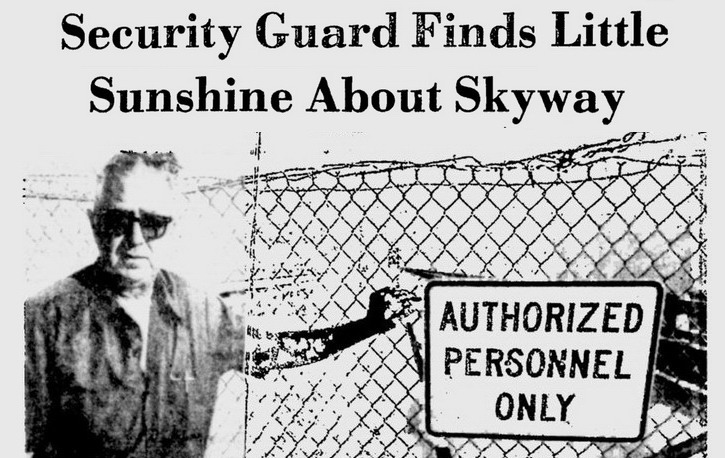02.09.87:
nytimes.com, Seven years after a tanker rammed the Sunshine Skyway Bridge, killing 35
motorists, a sleek new span across Tampa Bay has been dedicated.
At ceremonies Saturday, the new bridge was hailed by Senator Bob
Graham as ''an important symbol of the unity of the Tampa Bay region.'' As
Florida's Governor, Mr. Graham had lobbied for the project, whose importance has
grown along with the development of Southwest Florida in the years since the
accident.
While the old bridge was largely
used by commuters and fishermen, the new bridge is seen as a key link in the
interstate highway system. Local business leaders and politicians also hope it
will stimulate growth in the rural counties to the south across the bay from
booming St. Petersburg and Tampa. New Bridge Cost $230 Million
The new single-span bridge, supported by a network of cables hung
from two concrete pylons, was built at a cost of $230 million. Stretching 4.1
miles across the mouth of the bay, it will eliminate traffic congestion
resulting from the closing of one of the twin spans of the old bridge. For
drivers who preferred to avoid the jams by taking the round-the-bay route
between St. Petersburg and Bradenton, the bridge will save 40 miles.
About 15,000 sightseers walked on the bridge after a parade Saturday, but
the span will not be opened to traffic until next month because crews must
finish painting the cables and the center stripes. And a pier protection system
to guard the bridge against another wayward ship will not be completed until
late next year.
Still standing in the bay is
the original Sunshine Skyway built in 1954, which was struck by a phosphate
freighter in a storm on May 9, 1980. The midsection of the southern span is
missing, a reminder of the accident that caused a 1,200-foot steel section to
collapse, sending a Greyhound bus, at least five cars and a pickup truck
plunging 154 feet into the water. The old bridge will be dismantled, a process
that will take many months.
Florida transportation officials appealed to the
Federal Highway Administration for $5.1 million to repair the bridge, but were
told that it was obsolete and should be replaced.
Local
boosters hope that the advanced design and innovative construction techniques of
the new bridge will serve as a magnetic symbol of the region's growing
sophistication. Glass and concrete skyscrapers have sprouted since the bridge
accident, and banking, brokerage and financial consulting firms have replaced
phosphate mining and agricultural concerns as the area's economic backbone.
''I think that whatever the Golden Gate Bridge says for San
Francisco, the Skyway says for this area,'' said William C. Pashen, vice
president and project manager for the company that built the major portions of
the bridge.
The new Skyway was conceived by
an American and a French bridge builder, Eugene Figg and Jean M. Muller, who
formed Figg & Muller Inc. in 1978.
Modeled
after the
Brotonne Bridge over the Seine River in France, the Skyway pioneers
engineering techniques that the designers say allow construction of longer
bridges. The Skyway has internal cables that pass through a series of box-shaped
concrete sections of the roadway. The sections, weighing up to 500 tons each,
were cast on shore and shipped to the constuction site on barges.
The bridge's stability is maintained by
21 cables, each six to eight inches in diameter, that fan out from the tops of
two 432-foot pylons. The cables, anchored every 24 feet along the span, are each
able to support the weight of more than 400 cars.
Ships passing beneath the new Skyway will have 1,000 feet of clearance
between the main piers and 175 feet between the underside of the center span and
the waterline For all its glitter, however, the new Skyway was not built without
problems. A steel construction gantry collapsed in 1984, injuring four workers
and delaying work for about six months. In a separate mishap,
a workman died
when he jumped into the bay to retrieve a $10 bucket.
Another was struck and
killed by a car while installing reflectors on the south end of the bridge and a
third man was crushed by a falling crane in a contractor's workyard. Delays set
back the scheduled opening date by 17 months and added an extra $50 million to
the cost. |


















































































































